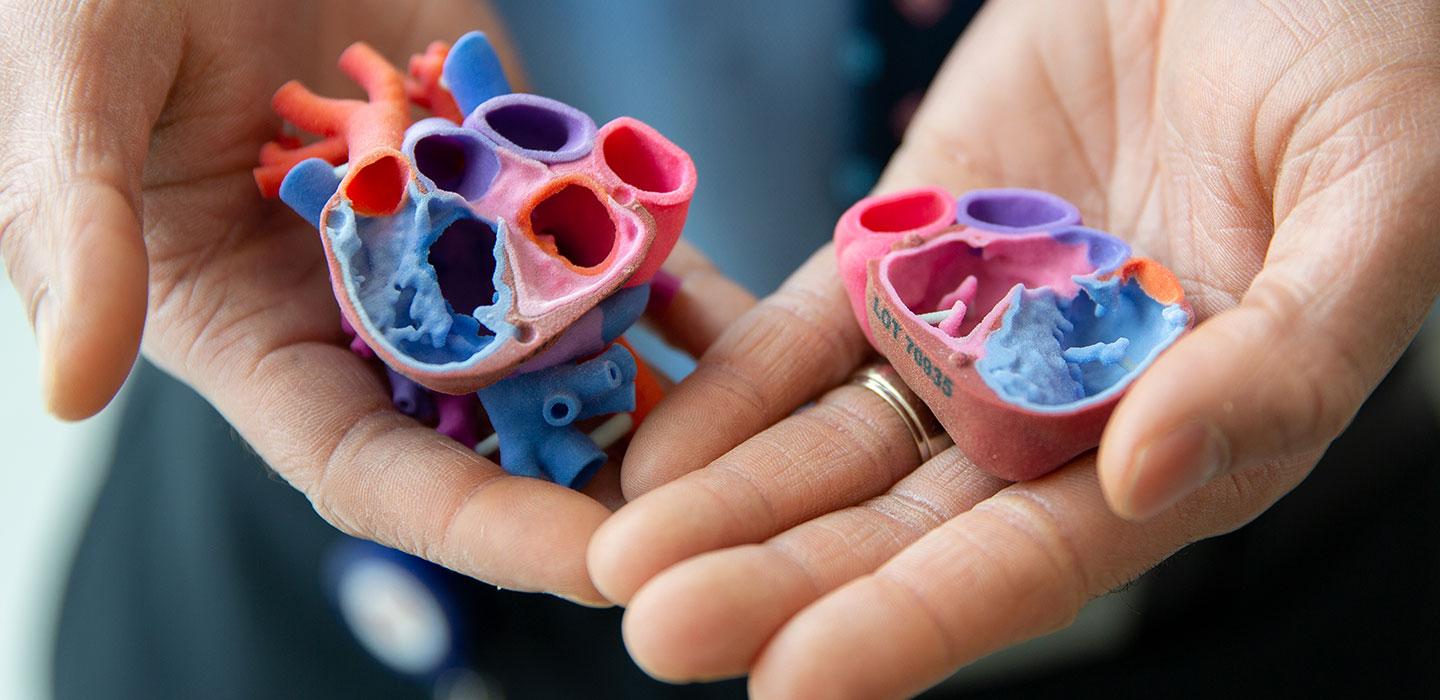Heart in the Right Place
How the latest technology is revolutionizing heart surgery.

It’s bubble-gum pink, laced with intricate blue and yellow squiggles, and easily fits in the palm of your hand. Though small, for one newborn baby, this one-of-a-kind plastic model carries tremendous weight. It’s an exact replica of her imperfect heart, and it helped save her life.
Pediatric heart surgeons execute complex procedures – dividing chambers, closing holes, rerouting blood flow – sometimes on premature infants who weigh less than a loaf of bread. To perform a successful surgery, it is crucial, and at times difficult, to visualize the intricacies of a patient’s unique anatomy.
And the stakes are high. Heart surgery needs to be effective the moment it’s completed or the patient has little chance of survival.
That’s where 3D models come in. UCSF recently established the Center for Advanced 3D+ Technologies, made possible by a $1.4 million grant from the UCSF Office of the Chancellor and supported by a $1.1 million gift from an anonymous donor. Complete with high-end printing equipment, advanced visualization, and a dedicated engineer, this center is capitalizing on the latest technology to advance pediatric care.
When planning and while performing surgery, 3D heart models provide a level of understanding of a patient’s anatomy that has never before been possible.
“The hardest part of cardiology should not be figuring out what’s wrong,” says cardiologist Shafkat Anwar, MD, co-director of the Center. “With these models, we can have a much richer and more detailed conversation about how to fix problems.”
The models help the medical team plan the most appropriate surgery, minimizing the potential for error and streamlining complicated procedures when every moment counts. Surgery can even be practiced on models printed with a material that mimics human tissue to determine the best course of action. That’s also an obvious educational benefit: Surgeons-in-training can hone their skills on these models before ever operating on a person. And patients and family members can understand a heart condition on a much deeper level.
Anwar is partnering with experts across UCSF to explore how 3D and virtual-reality technology can enable novel treatments for complex conditions. The ultimate goal is to make this technology readily available to serve both pediatric and adult patients throughout UCSF.
“These are not just things that someone is dreaming up in a lab. These are solutions that our patients need and that we can offer,” Anwar says.
Make a Gift to the Pediatric Heart Center